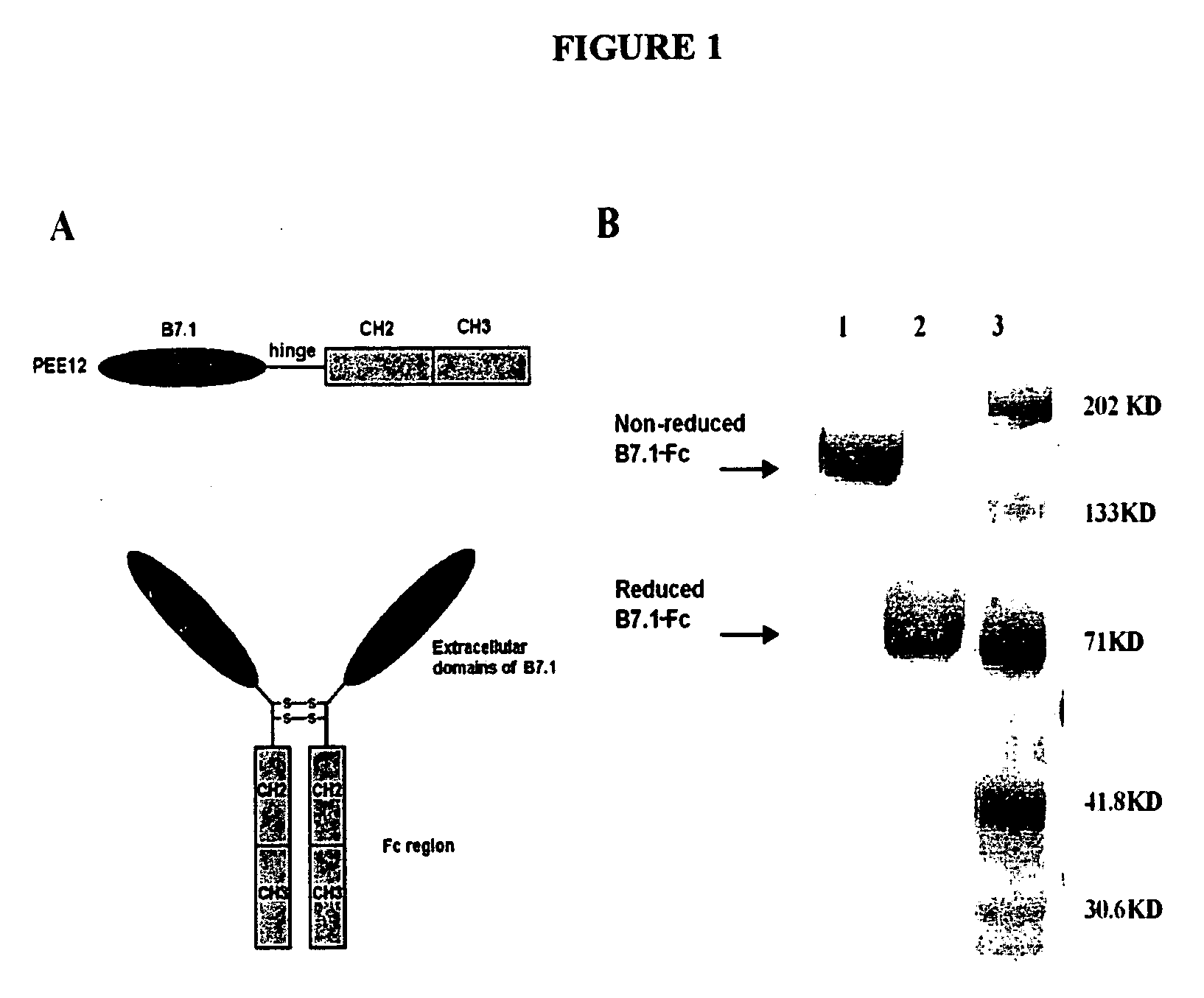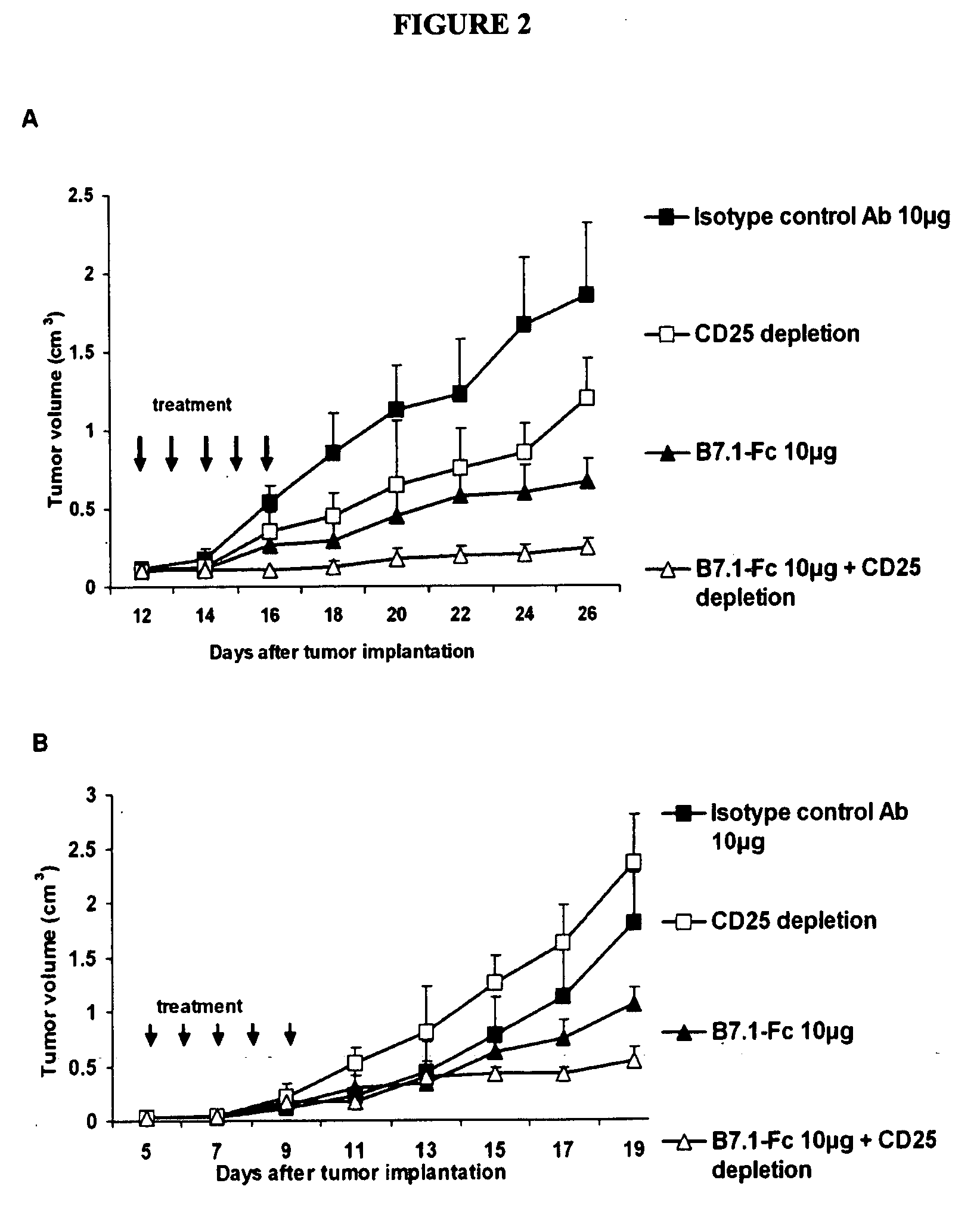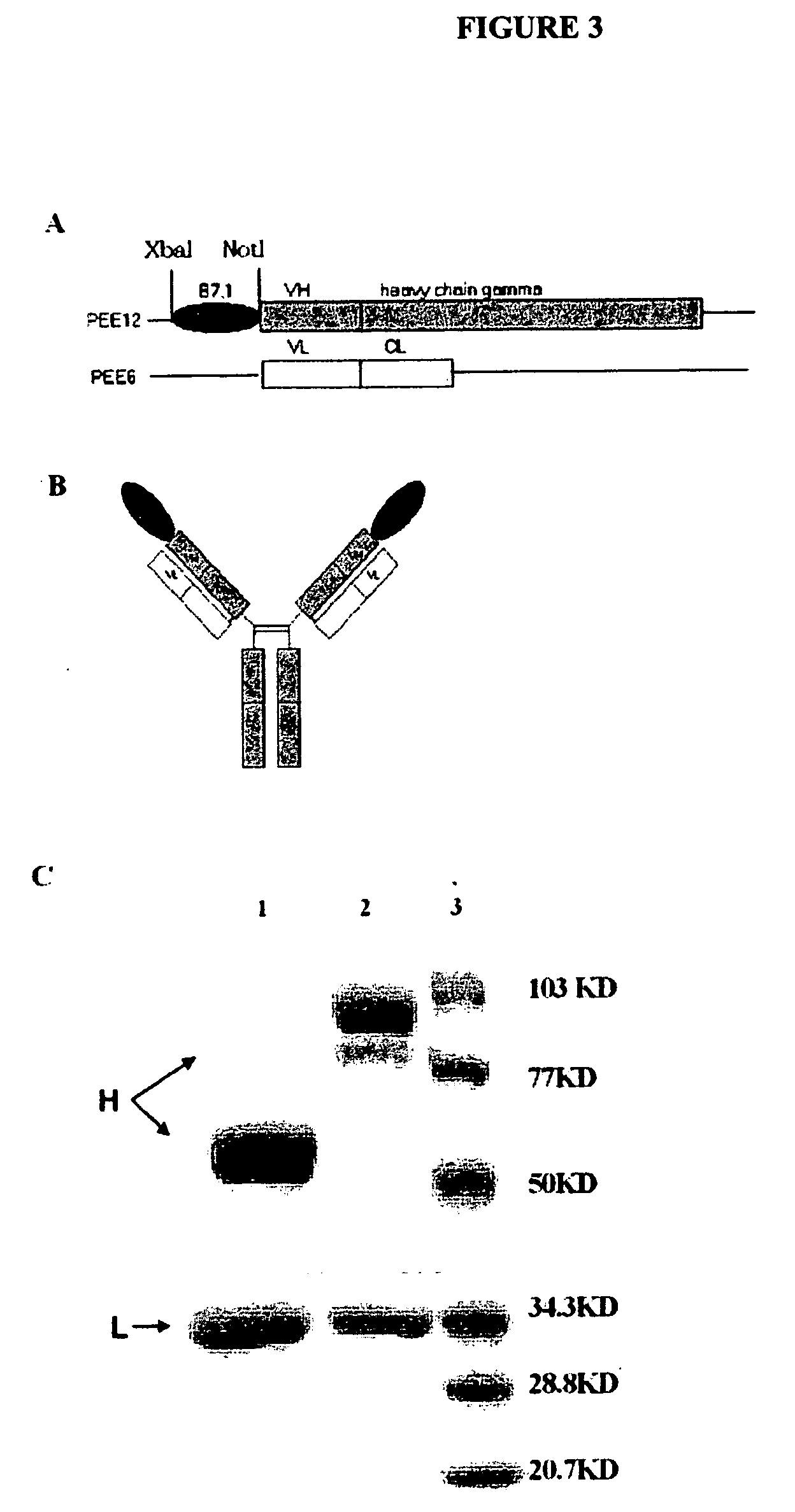Combination cancer immunotherapy with co-stimulatory molecules
a cancer immunotherapy and co-stimulatory technology, applied in the field of cancer immunotherapy, can solve the problems of incomplete tumor reduction, only a delay in the growth of well-established tumor implants, inadequate immune response, etc., and achieve the effect of reducing immunoregulatory t cell activity
- Summary
- Abstract
- Description
- Claims
- Application Information
AI Technical Summary
Benefits of technology
Problems solved by technology
Method used
Image
Examples
example 1
Materials and Methods
[0102] Reagents and Mice
[0103] The Glutamine Synthetase Gene Amplification System, including the expression plasmid pEE12, was obtained from Lonza Biologics (Slough, U.K.). The plasimid pBJ, containing human B7.1 (huB7.1) cDNA (nucleotide sequence identical to GenBank accession number M27533), was obtained from the American Type Culture Collection (Manassas, Va.). Restriction endonucleases, T4 DNA ligase, Vent polymerase, and other molecular biology reagents were obtained from either New England Biolabs (Beverly, Mass.) or Boehringer Mannheim (Indianapolis, Ind.). Chloramine T, GSEM (50×), and 2,2′-azino-bis(3-ethylbenzthiazoline-6-sulfonic acid) diammonium salt (ABTS) were obtained from Sigma Chemical Co. (St. Louis, Mo.). Characterized and dialyzed fetal calf sera (FCS) were obtained from Hyclone Corp. (Logan, Utah), and RPMI 640 medium, Selective Hybridoma Medium (SFM) without L-glutamine, MEM non-essential amino acids solution (100×), and phosphate-buffere...
example 2
Results of B7.1-Fc and B7.2-Fc Cancer Therapy
[0133] Construction, Expression, and Purification of B7.1-Fc
[0134] The C-terminus of B7.1 extracellular domain was fused onto the N-terminus of the hinge-CH2-CH3 molecule without any linker (FIG. 1). The fused B7.1-Fc was translated under human B7.1 signal sequence and the expressed fusion protein was a dimer as shown by SDS-PAGE. Cells expressing the highest leves of B7.1-Fc fusion protein were selected using a sandwich ELISA with monoclonal antibodies against human B7.1 or human IgG Fc. This subclone was found to produce over 100 μg / ml of fusion protein in aerated stir flask cultures.
[0135] The predicated molecular weight of the expressed fusion polypeptide was confirmed by SDS-PAGE under reducing conditions. The purity of the fusion protein was confirmed by HPLC which showed a main peak with a retention time of approximately 320 s. The activity of the fusion protein remains intact for one year when stored at −80° C.
[0136] Bioactivi...
example 3
Cloning and Testing of B7.1 / NHS76 Fusion Protein
[0158] Construction, Expression, and Purification of B7.1 / NHS76 Fusion Protein
[0159] The plasmids carrying the light chain (pEE6 / NHS76λ) and heavy chain (pEE12 / NHS76 HC) sequences were constructed as described previously (see Sharifi, et al. 2001. Hybridoma Hybridomics 20:305-311). The extracellular domains of human B7.1 (Base 318-1040 Genbank: M27533) (Gordon, et al., 1989 J. Immunol. 143:2714-2722) were amplified by PCR from full-length cDNA of human B7.1 using primers 5′-TTC TCT AGA ATG GGC CAC ACA CGG-3′ and 5′-AAT AGC GGC CGC ATC AGG AAA ATG CTC TTG-3′. The PCR product was then inserted into the N-terminus of the NHS76 HC gene in pEE12 / NHS76 HC vector by Xbal and Notl under the translation of B7.1 leader sequence. B7.1 was linked at its C-terminus to the antibody variable region to preserve the activity of B7.1 which depends on its amino terminus. The resulting expression vector pEE12 / B7.1 / NHS76 HC was co-transfected with pEE6 / N...
PUM
| Property | Measurement | Unit |
|---|---|---|
| Fraction | aaaaa | aaaaa |
| Fraction | aaaaa | aaaaa |
| Fraction | aaaaa | aaaaa |
Abstract
Description
Claims
Application Information
 Login to View More
Login to View More - R&D
- Intellectual Property
- Life Sciences
- Materials
- Tech Scout
- Unparalleled Data Quality
- Higher Quality Content
- 60% Fewer Hallucinations
Browse by: Latest US Patents, China's latest patents, Technical Efficacy Thesaurus, Application Domain, Technology Topic, Popular Technical Reports.
© 2025 PatSnap. All rights reserved.Legal|Privacy policy|Modern Slavery Act Transparency Statement|Sitemap|About US| Contact US: help@patsnap.com



